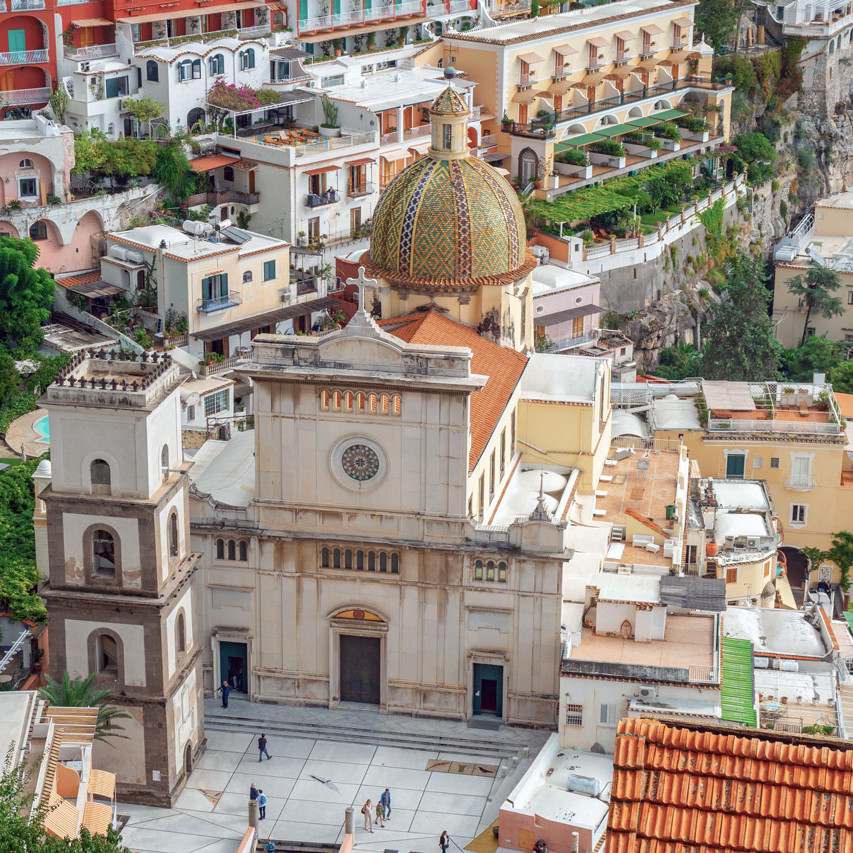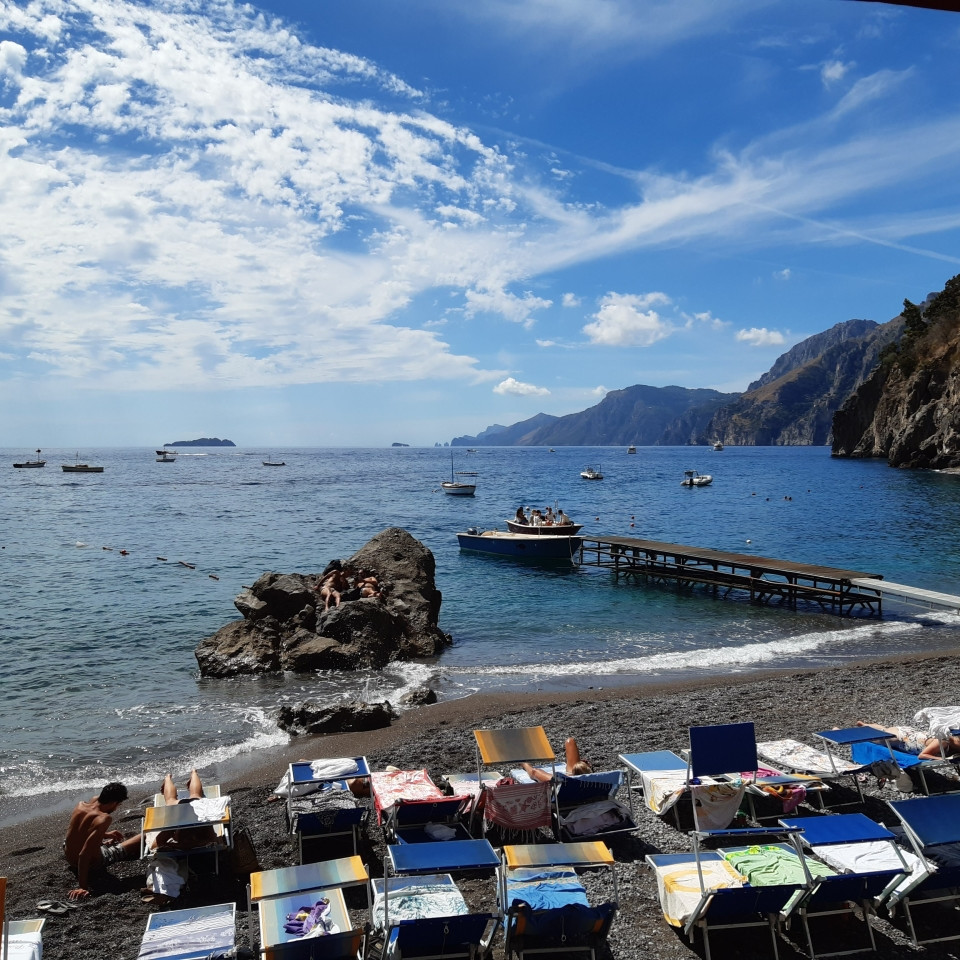POSITANO: THE PEARL OF THE AMALFI COAST
Positano, the first pearl of the Amalfi Coast coming from the Sorrento peninsula, is an ancient fishing village, a treasure trove of wonderful things to discover. This town has a great historical, artistic and cultural heritage with breathless views and traditions that will remain in your heart.
by Annalisa Russo
The ancient Romans already loved to go to Positano to relax and today we know that it is one of the favorite destinations of Italian and foreign tourists that every year chose it to spend their holidays.
share this article
Positano
Discovering Positano
Positano, also known as the “vertical town” with its houses perched on the rocks shaped like a pyramid, is wonderful from any perspective but when you look at this from the Spiaggia Grande or the sea, it looks like a postcard.
So, already appreciated by Romans, actually there was a real touristic boom during the Second World War. The photos of this evocative, picturesque and small town and those of the Amalfi Coast, frequented during the 60s and 70s by famous people such as Jacqueline Kennedy and her children, John Steinbeck, Franco Zeffirelli, Liz Taylor, Rudolph Nureyev, and many others, started to spread around the world making this dream destination popular in the international tourism.
The beating heart of Positano: the historic center
The historic center of Positano is its beating heart: a sequence of narrow streets and scalinatelle (steps), with many typical shops, such as, handmade sandals, colored pottery, and Moda Mare Positano (Positano fashion style). These many alleys and steps that characterized the Amalfi Coast will lead to the Church of Santa Maria Assunta and the MAR, the Archeological Museum of Positano.
The Church of Santa Maria Assunta and its majolica dome are some of the symbols of this small town. The church, dating from the 10th century, dominates the Spiaggia Grande and keeps a Byzantine icon of the black Virgin and her child Jesus that is linked to the ancient legend about the origin of the name Positano.
According to the legend, the origin of the name Positano comes from an event that occurred around the 13th century. It is told that the pirates, after stealing the Byzantine picture of the Virgin, today kept in the Church of Santa Maria Assunta, headed out to sea with their boats, but were suddenly caught in a storm. There, they heard the voice of the Virgin asking to be left on the ground and to stop there by saying “posa posa” (Italian for “put down"). So, the name of the town is said to derive from this event. Instead, the colors of the dome of the church seem to evoke the colors of this place.
The MAR (the Roman Archeological Museum) which is just behind the majestic bell tower of the Church of Santa Maria Assunta, has been a successful example of the historical, artistic, and cultural heritage of this small town since 2018. The museum is divided into two crypts and a portion of villa dating from the 1st century AD, a jewel of the Roman period that was rebaptized “the small Pompeii of the Amalfi Coast”. This museum allows you to take a journey through different eras until the Vesuvius eruption in 79 AD that destroyed, also, the most famous Pompeii and Herculaneum.
The beaches
The Spiaggia Grande is not far from the Church of Santa Maria Assunta and is the most famous beach of Positano, an iconic place from which you can enjoy a breathless view overlooking the small town. The less crowded beaches Fornillo, Arienzo, and Laurito, little corners of paradise, are a great choice if you want to spend a relaxing day. Fornillo, not far from the Spiaggia Grande, is accessible by the Path of Lovers, Arienzo and Laurito - further away from the town center – through a long staircase or by sea, directly from the port of Positano with the shuttle services provided by their restaurants and beach resorts. Less famous and further away from the center, these little beaches will give you authentic glimpses you cannot miss.
For example from the beach of Fornillo you can admire the homonymous saracen tower, the Fornillo Tower in all its beauty. This tower, together with the Sponda Tower and Trasita Tower is one of the most important watchtowers built in the 16th century to defend the territory from the pirates. When the locals received the warning of an imminent attack, they sought refuge in the villages of Positano, Nocelle and Montepertuso, in the upper part of the town.
The Path of the Gods: one of the most evocative natural trails in the world
The village of Nocelle is the final destination of a famous nature trail. So, even if you prefer the mountain to the sea, Positano will not disappoint you. As a matter of fact, this small town offers one of the most popular and beautiful trekking paths of the Amalfi Coast: the Path of the Gods. This path is suspended between the sky and the sea and winds from Bomerano, a small town of Agerola, until Nocelle, the highest and the most ancient village of Positano that boasts a spectacular view. Then, from Nocelle it is possible to reach the localities of Arienzo and Montepertuso. The last one is famous for the Gambera Mountain, 510 meters high and characterized by a big hole, in the local language, called “pertuso” from which this place takes its name. According to the legend, the big hole would have been caused by the clash of the devil with the Virgin.
A romantic small town
The tourist offer that includes beaches and sea, wonderful views, art and history and much more is ready to satisfy everyone’s desires. Then, the small town of Positano is also considered one of the ideal destinations for spending a romantic and unforgettable weekend.
- Although the Church of Santa Maria Assunta is one of the symbols of Positano, it is not the only one. So, we have to mention the following churches, each one with its own particularity: the Church Nuova, the churches of St. Margherita Fornillo, St. Caterina, St. Giacomo Liparlati, Maria SS Del Rosario-Mulini, St. Giovanni, St. Matteo (Via Monte), St. Lucia, e St. Pietro.
- Positano, famous for its traditions, every year on June 15 during the Saint Vitus’ celebrations, its Patron saint, organizes an event really heartfelt by the locals: the blessing of the dogs.
- On August 15 during the feast of Assumption, it is organized one of the most desired summer events of the Amalfi Coast: the fireworks of Ferragosto.
fun facts
share this article


















